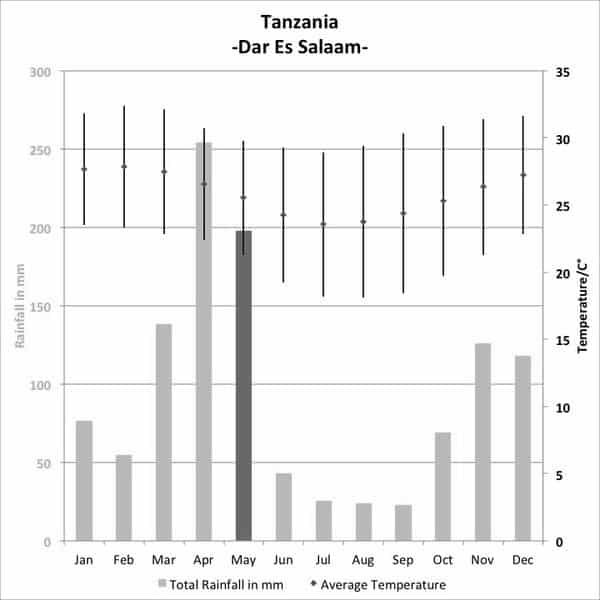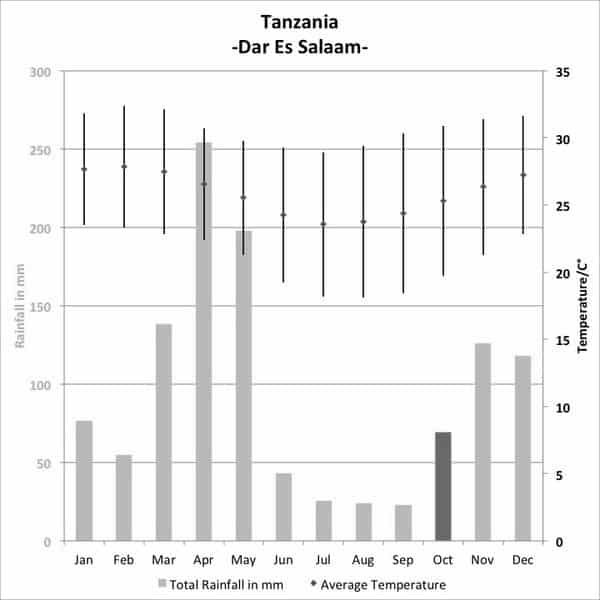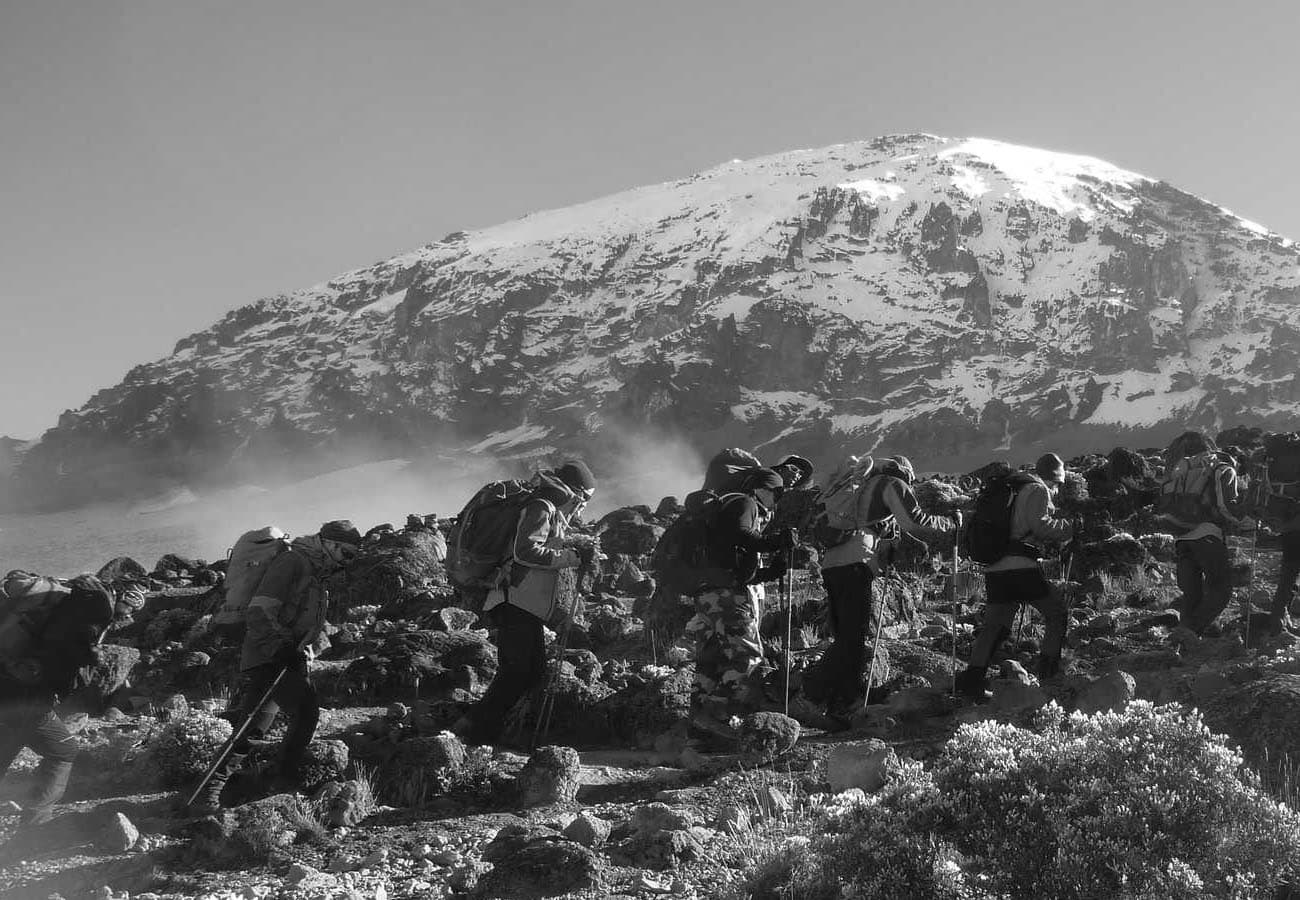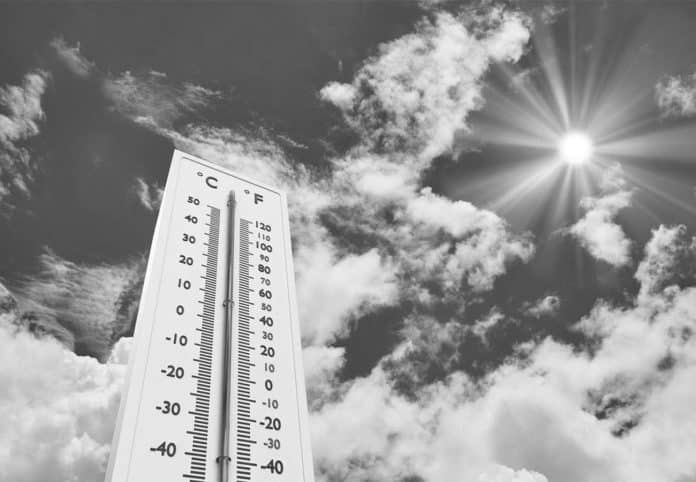Exploring the Current Temperature in Tanzania: What You Need to Know
Welcome to Tanzania, where the weather is as diverse as the wildlife. If you’re planning a trip to this East African gem, understanding the current temperature in Tanzania Africa is essential. In this article, we’ll delve into the ins and outs of Tanzania’s climate and help you pack accordingly for your adventure.
Tanzania, known for its vast savannahs, golden beaches, and majestic Mount Kilimanjaro, experiences distinct climatic zones. From the tropical coastal regions to the cooler highlands, each area has its own unique weather patterns.
Average temperature and weather patterns in Tanzania
Tanzania’s average temperature varies greatly depending on the region and time of year. The coastal areas, such as Dar es Salaam and Zanzibar, experience hot and humid weather with temperatures ranging from 25 to 30 degrees Celsius (77 to 86 degrees Fahrenheit) throughout the year. These regions are influenced by the Indian Ocean, which brings warm and moist air currents.

As you move further inland, towards the central and northern parts of the country, temperatures become milder. The highlands, including popular destinations like Arusha and the Ngorongoro Conservation Area, have temperatures ranging from 10 to 20 degrees Celsius (50 to 68 degrees Fahrenheit). These areas are situated at higher altitudes, resulting in cooler temperatures compared to the coastal regions.
Tanzania also experiences two rainy seasons: the long rains from March to May and the short rains from October to December. During these periods, the country receives refreshing showers that transform the landscape into a lush paradise. It’s important to consider these rainy seasons when planning your trip, as they can affect accessibility to certain areas and wildlife migration patterns.
Factors influencing Tanzania’s temperature
Several factors influence the current temperature in Tanzania Africa. One of the key factors is the country’s proximity to the equator. Being located relatively close to the equator means that Tanzania receives ample sunlight throughout the year, resulting in generally warm temperatures.
Another influential factor is the topography of the country. Tanzania is characterized by diverse landscapes, including mountains, plateaus, and coastal plains. The altitude of a particular region plays a significant role in determining its temperature. Higher elevations, such as Mount Kilimanjaro and the Ngorongoro Conservation Area, experience cooler temperatures due to their increased distance from sea level.
Ocean currents also impact Tanzania’s temperature. The Indian Ocean, which borders the eastern coast of Tanzania, influences the climate in coastal regions. The warm currents from the Indian Ocean contribute to the hot and humid conditions experienced in places like Dar es Salaam and Zanzibar.
The impact of climate change on Tanzania’s temperature
Like many other parts of the world, Tanzania is not immune to the effects of climate change. Rising global temperatures have led to significant changes in the country’s weather patterns. Over the past few decades, the country has experienced more frequent and intense heatwaves, as well as irregular rainfall patterns.
These changes have had a profound impact on the current temperature in Tanzania Africa. Droughts have become more common, affecting agriculture and water resources. The increased temperatures also pose risks to human health, particularly in urban areas.
Recognizing the importance of addressing climate change, Tanzania has implemented various initiatives to mitigate its effects. The country is investing in renewable energy sources, such as solar and wind power, to reduce reliance on fossil fuels. Additionally, conservation efforts are being made to protect Tanzania’s unique biodiversity and ecosystems.
Exploring the different regions of Tanzania and their temperatures
Tanzania’s diverse geography gives rise to varying temperatures across different regions. Let’s take a closer look at some of the popular destinations and their average temperatures:
- Coastal Regions: The coastal areas, including Dar es Salaam and Zanzibar, have hot and humid weather year-round. Average temperatures range from 25 to 30 degrees Celsius (77 to 86 degrees Fahrenheit). These regions offer stunning beaches and vibrant cultural experiences.
- Northern Highlands: The northern highlands, home to Mount Kilimanjaro and the Ngorongoro Conservation Area, have cooler temperatures due to their higher altitude. Average temperatures range from 10 to 20 degrees Celsius (50 to 68 degrees Fahrenheit). These areas are ideal for hiking, wildlife safaris, and experiencing Tanzanian culture.
- Southern Highlands: The southern highlands, encompassing regions like Iringa and Mbeya, also have cooler temperatures compared to the coastal areas. Average temperatures range from 15 to 25 degrees Celsius (59 to 77 degrees Fahrenheit). The southern highlands offer breathtaking landscapes, including tea plantations and the stunning Ruaha National Park.
- Western Tanzania: The western regions, such as Kigoma and Katavi National Park, experience a tropical climate with average temperatures ranging from 20 to 30 degrees Celsius (68 to 86 degrees Fahrenheit). These areas are known for their wildlife reserves, including the famous chimpanzees of Gombe Stream National Park.
Best time to visit Tanzania based on temperature

The best time to visit Tanzania largely depends on your personal preferences and the activities you plan to engage in. However, considering the temperature trends can help you make an informed decision.
If you prefer milder temperatures, the months of June to October are generally considered the best time to visit Tanzania. During this period, temperatures are cooler, especially in the highlands. It’s also the dry season, which means you’ll have a higher chance of spotting wildlife as they gather around water sources.
For those seeking a beach getaway, the coastal regions of Tanzania offer warm weather year-round. However, it’s important to note that the long rains from March to May can bring occasional showers to these areas. If you’re planning a beach vacation, it’s advisable to avoid the rainy seasons.
If witnessing the Great Wildebeest Migration in the Serengeti is on your bucket list, plan your visit between December and March. During this time, the herds move from the Serengeti to the southern plains in search of fresh grazing. This period coincides with the short rains, but the occasional showers shouldn’t deter you from experiencing this incredible natural phenomenon.
Tips for staying comfortable in Tanzania’s varying temperatures
Tanzania’s diverse climate requires careful consideration when packing for your trip. You also need to check for the current temperature in Tanzania Africa, before you pack so that you would know what and what not to include in your bag. Here are some tips to ensure you stay comfortable throughout your adventure:
- Layering: Pack lightweight, breathable clothing that can be layered. This will allow you to adjust your clothing according to the temperature changes throughout the day.
- Sun Protection: Tanzania receives ample sunlight, so don’t forget to pack sunscreen, sunglasses, and a hat to protect yourself from the sun’s rays.
- Insect Repellent: Mosquitoes are prevalent in certain regions of Tanzania, especially during the rainy seasons. Be sure to pack insect repellent to avoid insect bites and potential diseases.
- Comfortable Footwear: Depending on your activities, pack comfortable walking shoes or hiking boots. If you plan to visit the beach, flip-flops or sandals are essential.
- Rain Gear: If you’re visiting during the rainy seasons, pack a lightweight rain jacket or poncho to stay dry during unexpected showers.
- Hydration: Stay hydrated by carrying a reusable water bottle with you. It’s important to drink plenty of fluids, especially in hot and humid conditions.
Weather forecasting tools and resources for Tanzania

To stay informed about the current temperature in Tanzania Africa, there are several resources you can utilize:
- Tanzania Meteorological Agency (TMA): The TMA provides weather forecasts, warnings, and climate information for Tanzania. Their website and mobile app are valuable resources for up-to-date weather information.
- Weather Apps: Download weather apps like AccuWeather, The Weather Channel, or Weather Underground, which provide detailed forecasts and real-time weather updates for Tanzania.
- Local Guides and Tour Operators: When planning your trip, consult local guides and tour operators who have firsthand knowledge of the weather conditions in specific regions. They can provide valuable insights and advice based on their experience.
Climate-related activities and attractions in Tanzania
Tanzania’s unique climate offers a range of activities and attractions for nature enthusiasts. Here are some climate-related experiences to consider during your visit:
- Wildlife Safaris: Tanzania is renowned for its diverse wildlife population. Embark on a safari adventure in the Serengeti, Ngorongoro Crater, or Selous Game Reserve to witness the incredible biodiversity that thrives in Tanzania’s varying climates.
- Mount Kilimanjaro Trek: Challenge yourself to climb Africa’s highest peak, Mount Kilimanjaro. The trek takes you through different climate zones, from lush rainforests to arctic-like conditions near the summit.
- Beach Getaways: Relax on the pristine beaches of Zanzibar, Mafia Island, or Pemba Island. The warm coastal climate offers the perfect setting for swimming, snorkeling, and unwinding under the sun.
- Cultural Experiences: Immerse yourself in Tanzanian culture by visiting local tribes and communities. Learn about their traditions, music, and dance, and gain a deeper understanding of how climate influences their way of life.

People participating in Mount Kilimanjaro Trek
Understanding the current temperature in Tanzania Africa can greatly enhance your travel experience in this beautiful country. From the hot and humid coastal regions to the cooler highlands, Tanzania offers a diverse climate that caters to various preferences.
Consider the average temperatures, rainy seasons, and the activities you wish to engage in when planning your trip. Pack accordingly and make use of weather forecasting tools to stay informed about the current and predicted weather conditions.
By being well-prepared and adaptable to Tanzania’s temperature variations, you’ll have a memorable and comfortable adventure, whether you’re exploring the savannahs, scaling mountains, or relaxing on the golden beaches. Tanzania awaits with its incredible wildlife, stunning landscapes, and warm hospitality.
For more information on the weather click here!































